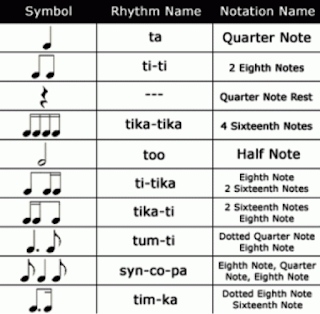The Head Voice or Falsetto Register
Thanks
for joining our little tour of the Vocal Registers. This is post/stop number THREE, so if you
haven’t read the first two, be sure to catch up so that you’ll have all the
information you need to understand everything about all your possible Vocal
Registers. Enjoy!
The Head
Voice and/or Falsetto Register is the range of notes directly above the Modal
or Chest Register. In the male voice,
this takes the form of the Falsetto Register.
In females, this vocal area is the Head voice. These registers share characteristics but
there are also very distinct traits as well.
Both of these registers have ranges that are about an octave,
occasionally more. Below, I go into a
little more detail about the specifics of each of these two areas.
So, the
Falsetto Register was actually named from the Italian word for “false”, which
suggests that the timbre (the tone color or tone quality) of the voice in this
area is different from a true, authentic vocal timbre; it tends to be
breathier, more limited in relation to controlling dynamics and even tone
quality. The Falsetto voice comes from
the vibration of the ligamentous edges of the Vocal Folds, where the main body
of the Fold is really relaxed. The modal voice, by contrast, uses every layer
of the Vocal Folds with the Glottis opening first at the bottom and then, to
the top. Singing in Falsetto utilizes
different muscles than singing in the Head voice, though some males may have a
legitimate Head voice above their Modal or Chest voice, which is then followed
by a Falsetto. For producing Falsetto,
the Vocalis Muscle is not used at all but the Crico-thyroid Muscles are
stretched essentially to their maximum.
The characteristic Falsetto sound is created as air is blown over the
thin edges of the Thyroarytenoid Muscles with the pitch being controlled by the
breath. Obviously, the greater the
breath control, the stronger the chances of a robust and substantial Falsetto
Register. It is possible to strengthen
and reinforce Falsetto tone so that it is less breathy and more substantial but
the timbre nor the function of the sound will ever match those of a full,
natural Head voice. Where possible, it
is always best to attempt to discipline and develop the natural Head voice,
even in males, rather than rely completely on Falsetto unless other limitations
exist.
During
Falsetto production the Vocal Folds are slightly separated when phonation takes
place, though the Folds are still elongated.
As the pitch rises and air pressure is increased, the separation of the
Folds also increases. There is, however,
actually a phenomenon in some singers called “Damping” where the Glottal
Opening decreases as the pitch rises, so that there is only a tiny slit on the
highest pitches. Females do not really
have a “Falsetto” Register because when their Vocal Folds are separated, the
tone is simply breathy. The tone
produced by females above their Chest or Modal Register is a true Head voice;
it has energy, support, and tone, unlike the characteristics of the male Falsetto
Register, which lacks them all.
The Head
Voice, for females and some males, is the register above the Modal or Chest
Register, and it has this name because the resonance is mostly “felt” in the
head. This Head Voice or Voce de Testa
is usually somewhat lighter in timbre with “ringing” clarity. The Vocal Folds become more and more
elongated the higher the singer goes. It
is possible, however, to descend from the Head Voice down into the Modal or
Chest Register, though volume and control may be lost at lower pitches.
Those
who have significant range above their Modal or Chest Register often have a
Head Voice or Falsetto, as well as a Whistle Register. Information on the Whistle Register follows
on the next blog post. Thank you for
reading. Thank you so much for your
questions, comments, and/or suggestions for future blog post topics! I really appreciate each of you and hope you
are benefiting from the information you learn here. If you have any questions about my lessons or
me, please check out my website at www.SingitForward.net. Thanks again!
Sing it Forward!


Comments
Post a Comment